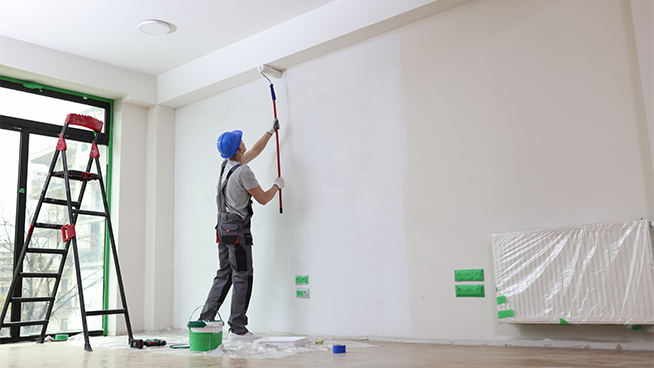
From The Detroit News | By Ken Calverley and Chuck Breidenstein
DETROIT, October 31, 2024 ~ It seems odd that a professional painting company would give the Guys DIY tips for painting to share with our listeners every week.
But John MacFarland, owner of MacFarland Painting in Livonia and Hartland, understands the reality of home ownership.
Sometimes we feel our budget just doesn’t allow for hiring a professional services company to come in and recoat that spare bedroom or a single wall in the dining area.
As we enter into the fall holiday season, the Guys thought it appropriate to summarize a few of these tips.
John’s first admonition regards knowing the surface you are working with.
It makes a difference if you have aluminum versus wood, or drywall instead of plaster.
Are you applying the product to a smooth material or is it textured? What type of sheen does the old wall have, glossy, matte, or flat, compared to what you would like it to have?
October 27, 2024 ~ Chuck “The Inside Guy” Breidenstein and Ken “The Outside Guy” Calverly offer the knowledge and resources you need to make the home of your dreams a reality.
(CONTINUED)
Additionally, you should consider whether the existing coating is an oil-based or water-based product.
John also cautions that paint formulations change periodically, so that the premium brand you applied three years ago may have the same label but be a different product in terms of performance.
He has told us on several occasions that his technicians will recognize such a change in the way a product goes onto the surface, even before the company has been notified of the new mix.
We are also told to always use premium products, whether they be the paint or stain we are applying or the tools we are using for the project.
Rollers are a good example, since they are easily and affordably purchased.
There are many different types and sizes, from 3 inches to 18 inches, with 9 inches the standard. Woven or knit synthetics are suggested for many interior projects with woven the preference for glossy finishes compared to the use of knit rollers for flat or eggshell applications.
Lambswool rollers are more often used for oil based or glossy finishes to create a more even finish.
Keep in mind that most rollers will shed at some point, so it is important to keep a close eye as you apply and to understand how the color looks both during wet application and after the cure.
A tip for new rollers is to wrap them lightly with painter’s tape, then remove the tape to get rid of loose fibers.
Foam rollers and pad applicators can be a good choice for close work such as trim and furniture, and the depth of the pile on any applicator is important to note depending on what you are covering.
As an example, the standard roller knap is 3/8ths to half an inch thick, but for painting that wood fence or deck, you should use a 3/4- to 1-inch nap.
Brushes are an entirely different consideration, and every professional painter has his favorite material, type and handle.
For the novice, we usually choose between a synthetic for many water-based paints, natural hair for oil-based applications, or what they term chinex, for various products including the newer low VOC paints.
The chinex is a modified nylon that claims better paint pick up, greater durability and bristle stiffness retention, and ease of cleanup after use.
Improper use, storage, cleaning, age and quality all affect finishes applied by brush.
Angle-cut brushes with tapered edges are suggested for cut-work around trim or corners, though some professionals do awesome work with a standard bristle.
Even brush handles may be an issue as the variety offered can confuse an amateur and affect the ease and accuracy of the work.
MacFarland suggests that fit and feel over time is the best criteria for deciding between the long handle, rat tail, fluted, beaver tail or shortened version.
Because of space considerations, we have only been able to summarize some of the many decisions to be made when considering a DIY painting project.
We have not talked about the preparation required, lighting considerations, or even the application and design issues for a feature wall or wainscoting in the formal dining room.
For that we will have to either wait for another time, or you can check out the professionals like MacFarland at InsideOutsideGuys.com.
**
For more advice, listen to The Inside Outside Guys every Saturday and Sunday on AM 760-WJR from 10 a.m.-noon or contact us at InsideOutsideguys.com.
96.3 WDVD TOP STORIES:








